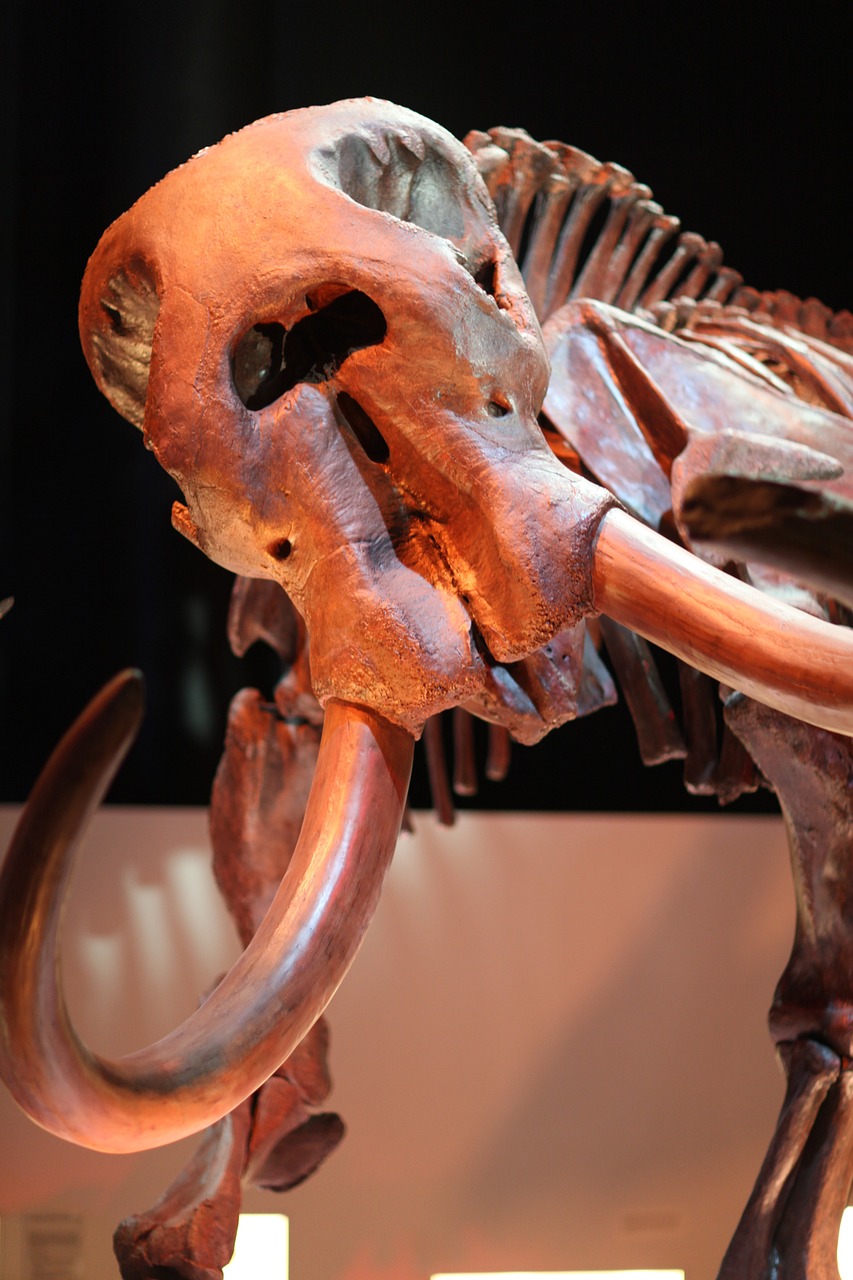Mammoths Jurassic? No. They are a contemporary animal
Mammoths are not like Tyrannosaurus or Pteranodon. They are recent creatures in terms of the Earth’s history. We now know that they managed to survive on remote islands such as Wrangel Island in the Arctic Ocean until just 4,000 years ago, when human civilisation was already established.
Their characteristic long, curved tusks have a role to play besides fighting rivals. They are thought to have been used for various purposes, such as shoveling snow for food and attracting fellow mammoths.
Although they have sabre-toothed tusks like sabre tigers, mammoths are herbivores because they are members of the elephant family. While grass was their main diet, they also ate a variety of plants, including herbs, shrubs, mosses and flowers.
It is also known that mammoths and present-day elephants share a common ancestor that lived millions of years ago. And because of the similarities between the two species, research is continuing to revive the mammoth through genetic engineering techniques.

Their social structure mirrors that of modern elephants. They live in matrilineal family groups consisting of a female and her offspring.
Adult males are thought to have led solitary lives or formed loose bachelor groups, interacting with family groups only during the breeding season.
Furthermore, mammoth footprint fossils reveal further aspects of their social behaviour. For example, there are examples where large footprints appear to surround smaller footprints, suggesting that adult animals may have formed a protective barrier around young mammoths when danger was present, much like Stonehenge.
Although there are exceptions, mammoths are basically whole, cold-weather specimens. Dense, shaggy hair, a hump-shaped layer of fat on their backs for insulation, and long, curved tusks for sweeping up deep snow to reach the vegetation below. They mammoths are a mass of cold-climate adaptations suited to life in the ice-covered terrain of the Pleistocene.
Their range was very wide, extending around the world from the Iberian Peninsula of Spain and Portugal to China and Siberia, and even North America.
The relatively recent traces of Wrangel Island, mentioned at the beginning, is a remote Asian island quite east of Russia, as you can see in this video.
They are thought to have been relatively intelligent animals, with brains larger than those of modern elephants. And from the behaviour of their extant relatives, it is sometimes predicted that they probably had sharp memories, complex communication skills and even a sense of mourning for the dead.
Unlike dinosaurs, mammoths have also been found mummified. There may still be more lying around somewhere besides this found one.
Are mammoths woolly? Not necessarily
We generally imagine that woolly mammoths inhabit icy landscapes. But there are actually mammoths that live in warmer climates and have thinner hair, such as the Columbian mammoth in North America.
And the woolly woolly mammoth and its close relative, the Columbian mammoth, are not unrelated. Recent genetic studies have identified genes of the woolly mammoth in the DNA of the Columbian mammoth, suggesting instances of hybridisation between the two species.
Why did the mammoth become extinct?
The current prevailing hypothesis for dinosaurs is secondary damage from meteorites and meteoroids. And as we have mentioned, the mammoth has nothing to do with that period.
So why did they go extinct?
It is now generally accepted that the extinction of the mammoth was not caused by a single cause, but by a combination of factors.
First, climate change. At the end of the last ice age, the Earth’s climate warmed significantly and vast ice sheets melted. This climate change has transformed much of the cold steppe habitat of mammoths into forests and swamps unsuitable for them.
And human activity may also have had an impact. Early humans hunted mammoths for their meat, skin, bones and tusks. Overhunting may have played a significant role in the decline and eventual extinction of the mammoth, especially as the human population grew and spread.
Habitat fragmentation and loss. The above climate changes and human encroachment may have led to habitat fragmentation and loss, making it more difficult for mammoth populations to recover. Although the old truth is not known, these are the scenarios that are generally considered to be the cause of extinction today.
Finally. Mammoths are animals that previously survived with humans. I personally hope that perhaps they are still living in secret and leisurely in Siberia or deep in the Canadian islands.
It may be more than Bigfoot and less than the Japanese wolf, and this is how likely they are to survive today.



コメント